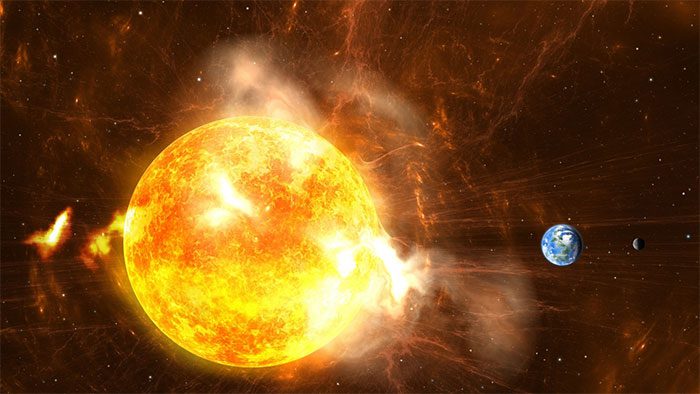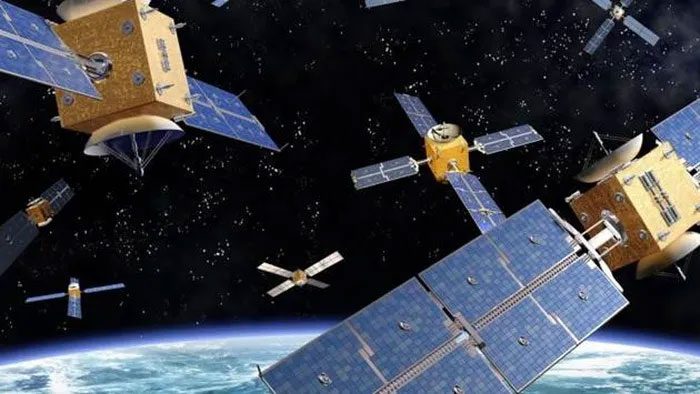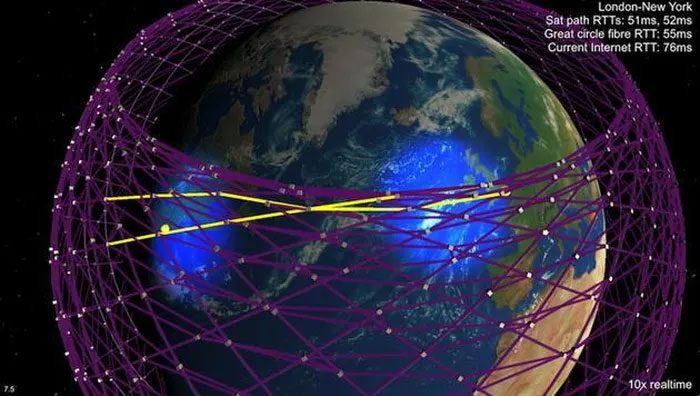The speed and intensity of the solar storm have increased the atmospheric density at low Earth orbit, creating strong friction that caused satellites to burn up.
A geomagnetic storm triggered by a significant radiation explosion from the Sun has disabled at least 40 out of 49 Starlink satellites recently launched by SpaceX, as part of a global satellite internet network, SpaceX announced on February 8.
This incident is believed to mark the largest mass satellite loss resulting from a single geomagnetic event, according to astrophysicist Jonathan McDowell at the Harvard-Smithsonian Center for Astrophysics in the United States, who spoke on February 9.
SpaceX’s statement indicated that the satellites were affected on February 4, one day after they were launched into low Earth orbit at an altitude of 210 km.

A coronal mass ejection (CME) causing a geomagnetic storm on Earth.
On February 3, SpaceX’s Falcon 9 rocket launched 49 Starlink satellites into low Earth orbit from the Kennedy Space Center in Florida, USA, almost simultaneously with a geomagnetic storm warning issued by the U.S. National Oceanic and Atmospheric Administration (NOAA).
The warning stated that energy bursts from a coronal mass ejection (CME) peak, a significant explosion of solar plasma and electromagnetic radiation from the Sun’s surface, had been detected on January 29 and could reach Earth as early as February 1.

SpaceX’s Starlink satellite system in low Earth orbit. (Photo: SpaceX).
According to SpaceX, the speed and intensity of the solar storm caused the atmosphere to warm, resulting in a significant increase in atmospheric density at low Earth orbit, creating strong friction or drag that knocked out at least 40 satellites.
The Starlink operator attempted to maneuver the satellites into a safe orbital configuration to minimize drag, but those efforts failed for most of the satellites, forcing them to descend back into the lower atmosphere, where they burned up.

A simulation of a constellation of thousands of satellites in SpaceX’s Starlink satellite internet service infrastructure. (Source: Mark Handley / University College London).
McDowell warned that geomagnetic storm activity will increase in the coming years as the Sun approaches the peak phase of its 11-year solar cycle.
The space exploration technology company SpaceX, founded by billionaire Elon Musk and based in Los Angeles, USA, has launched hundreds of small satellites into orbit since 2019, as part of its broadband satellite internet service. In a tweet on January 15, Musk stated that the company’s network of 1,469 satellites is operational, with 272 additional satellites moving toward their operational orbit.
SpaceX has announced plans to develop a constellation with around 30,000 satellites for this global satellite internet project.





















































